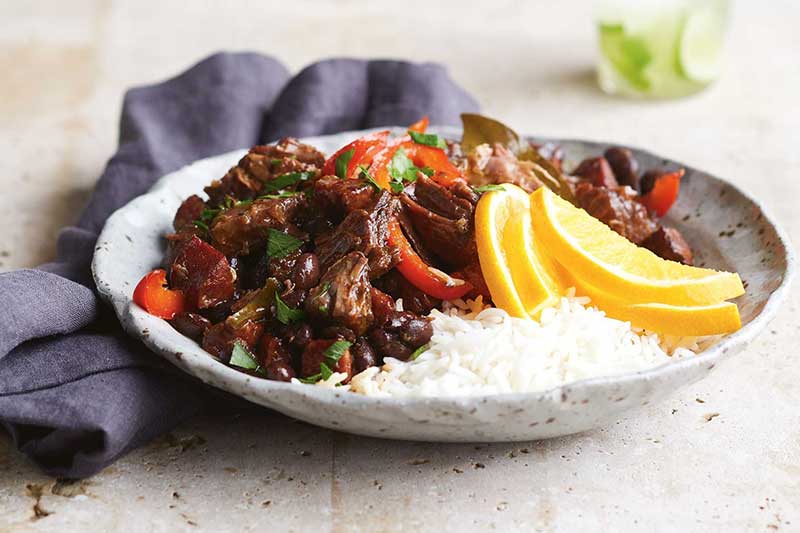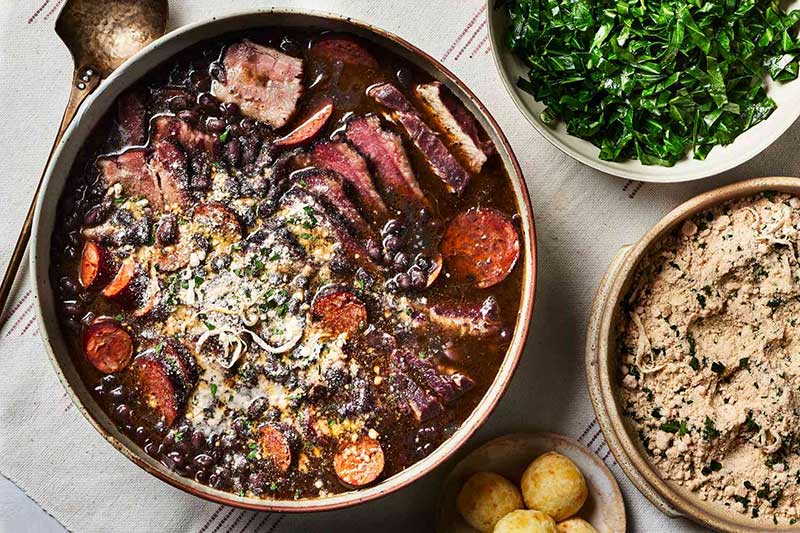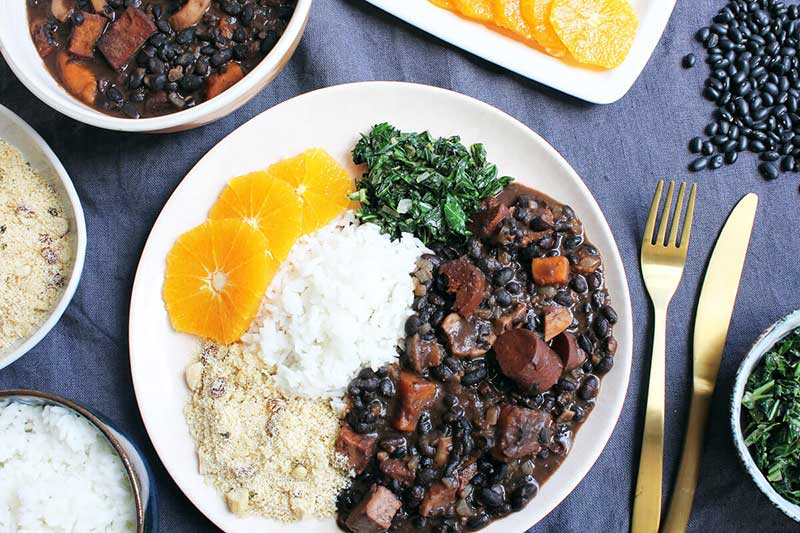 Feijoada is a delicious and hearty Brazilian dish that holds a significant place in the country’s culinary heritage. cupo aims to take you on a journey through the rich history of Feijoada, from its humble origins to its prominence as a national symbol of Brazil’s diverse cuisine.
Feijoada is a delicious and hearty Brazilian dish that holds a significant place in the country’s culinary heritage. cupo aims to take you on a journey through the rich history of Feijoada, from its humble origins to its prominence as a national symbol of Brazil’s diverse cuisine.
Introduction
Feijoada, often referred to as the national dish of Brazil, is a savory and hearty stew made primarily with black beans and various cuts of pork. This culinary masterpiece has deep roots in Brazilian history and has become an integral part of the country’s cultural identity.The Origins of Feijoada
Feijoada’s origins can be traced back to the era of Portuguese colonization in Brazil. It is believed that feijoada was originally created by African slaves who utilized the leftovers and inexpensive cuts of meat provided to them by their Portuguese masters. Over time, the dish evolved, incorporating native ingredients and cooking techniques.
Feijoada’s Rise to Prominence
Feijoada gained popularity throughout Brazil during the 19th and 20th centuries. Initially, it was consumed mainly by the lower classes and rural communities. However, as Brazil underwent urbanization, feijoada transcended social boundaries and became a beloved dish enjoyed by people from all walks of life.Feijoada Ingredients and Preparation
The key ingredients of feijoada include black beans, pork cuts such as pork shoulder, bacon, sausage, and often beef. These ingredients are combined and slow-cooked with onions, garlic, and various spices to create a rich and flavorful stew. Feijoada is traditionally served with rice, collard greens, farofa (toasted cassava flour), and orange slices to balance the flavors.Regional Variations of Feijoada
Feijoada showcases regional diversity within Brazil. Different states and regions have their own unique variations of the dish. For example, the feijoada from Rio de Janeiro typically includes dried beef, while feijoada from Bahia may include seafood. These regional variations add depth to the culinary landscape of Brazil.Feijoada: A Culinary Tradition
Feijoada is more than just a dish; it is a culinary tradition that brings people together. In Brazil, feijoada is often enjoyed during festive occasions, family gatherings, and national holidays such as Carnival. It symbolizes unity, warmth, and the celebration of cultural diversity.
Feijoada and Brazilian Culture
Feijoada is deeply ingrained in Brazilian culture and is considered a symbol of national pride. Its roots in African, Portuguese, and indigenous cultures reflect the country’s history and heritage. Feijoada represents the fusion of diverse culinary traditions, making it an essential part of Brazil’s cultural fabric.Feijoada: A Global Delight
In recent years, feijoada has gained international recognition and has become popular in various parts of the world. Brazilian restaurants and food enthusiasts worldwide embrace the flavors and traditions of feijoada, spreading the appreciation for this delectable dish beyond Brazil’s borders.The Health Benefits of Feijoada
Apart from its delicious taste, feijoada also offers several health benefits. Black beans, the main ingredient of feijoada, are a great source of dietary fiber and protein. They also contain essential minerals such as iron and magnesium. Feijoada, when prepared with lean cuts of meat and served with nutritious side dishes, can be a wholesome and balanced meal.Tips for Enjoying Feijoada
To fully appreciate the flavors of feijoada, here are a few tips:- Savor it slowly to enjoy the complexity of flavors.
- Experiment with different side dishes like couve mineira (Brazilian collard greens) or farofa.
- Pair it with a refreshing caipirinha, Brazil’s national cocktail.
- Don’t forget to indulge in a slice of juicy orange afterward to cleanse your palate.
Feijoada Recipes: Traditional and Modern
Feijoada recipes can vary, offering a range of options for both traditionalists and those seeking a modern twist. Whether you prefer a classic feijoada recipe passed down through generations or an innovative interpretation with creative ingredients, there is a feijoada recipe to suit every palate.Mastering Paella Cooking Methods: From Stovetop to Grill
Exploring Feijoada Beyond Brazil
If you’re unable to visit Brazil, don’t worry! Many Brazilian restaurants and food festivals around the world feature feijoada on their menus. Exploring feijoada beyond Brazil allows you to experience the cultural significance and flavors of this iconic dish wherever you may be.Conclusion
Feijoada stands as a testament to Brazil’s rich culinary heritage. From its humble origins as a meal created by African slaves to its status as a national treasure, feijoada represents the fusion of cultures and flavors that define Brazil. It is more than just a dish; it is a symbol of unity, celebration, and the vibrant spirit of a nation.What is the History and Origin of Pastel de Bata?
Pastel de Bata, a traditional Filipino pastry, has a rich history and fascinating origin. Believed to have been introduced during the Spanish colonial era, pastel de bata origins and history can be traced back to the influence of Spanish convents and their monastic recipes. This delectable treat is typically filled with a combination of meat, vegetables, and spices, wrapped in a delicate pastry shell. Today, pastel de bata continues to be a beloved snack in the Philippines, cherished for its unique blend of Spanish and Filipino culinary traditions.
